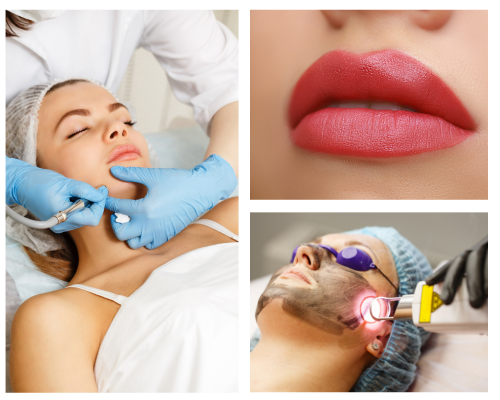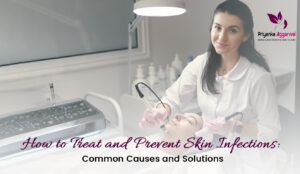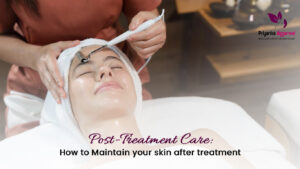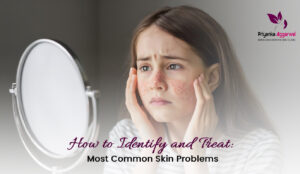Pigmentation issues such as dark spots, uneven skin tone, and hyperpigmentation can affect one’s confidence and self-esteem. Fortunately, advancements in dermatology offer various treatments to address pigmentation concerns effectively. In Kolkata, individuals have access to a range of pigmentation treatments provided by skilled dermatologists and specialized clinics. This article explores the landscape of pigmentation treatment in Kolkata, including popular procedures, costs, efficacy, and frequently asked questions.
Laser Treatment for Pigmentation Cost in Kolkata
Laser treatment is a popular option for addressing pigmentation issues, as it targets melanin in the skin, reducing the appearance of dark spots and hyperpigmentation. In Kolkata, the cost of laser treatment for pigmentation varies depending on factors such as the clinic’s reputation, the type of laser used, and the severity of the pigmentation. On average, the cost of laser treatment for pigmentation in Kolkata ranges from INR 3,000 to INR 10,000 per session.
Pigmentation Laser Treatment Price
Pigmentation laser treatment prices in Kolkata depend on several factors, including the type of laser technology used, the size of the treatment area, and the number of sessions required. Clinics offering advanced laser treatments may charge higher prices, while those using older technology may offer more affordable options. It’s essential to consult with a dermatologist to determine the most suitable treatment plan and associated costs.
Skin Whitening Laser Treatment Cost in Kolkata
Skin whitening laser treatments aim to reduce pigmentation and even out skin tone, providing a brighter and more radiant complexion. In Kolkata, the cost of skin whitening laser treatment varies depending on the clinic, the type of laser used, and the individual’s specific needs. Patients interested in skin whitening laser treatment should schedule a consultation with a qualified dermatologist to discuss treatment options and associated costs
Face Laser Treatment Price
rejuvenating the complexion and promoting a more youthful appearance. The cost of face laser treatments in Kolkata depends on factors such as the type of laser technology used, the size of the treatment area, and the number of sessions required. Prices typically range from INR 3,000 to INR 15,000 per session.
Oliva Skin Laser Treatment Cost
Oliva Skin & Hair Clinic is a renowned chain of dermatology clinics offering a range of skin and hair treatments, including laser therapy for pigmentation. The cost of laser treatment for pigmentation at Oliva Skin & Hair Clinic in Kolkata may vary depending on the specific treatment plan recommended by the dermatologist. Patients can inquire directly with the clinic for pricing details and package options.
Which Treatment is Best for Pigmentation?

In Kolkata, dermatologists offer a range of treatments to address pigmentation concerns effectively. Some of the most popular procedures include:
Laser Therapy: Laser treatment targets melanin in the skin, breaking down excess pigment and promoting collagen production for smoother, more even-toned skin. Various laser technologies, such as Q-switched lasers, fractional lasers, and intense pulsed light (IPL) therapy, may be used depending on the type and severity of pigmentation.
Chemical Peels: Chemical peels involve applying a solution to the skin to exfoliate the outer layers, revealing fresh, evenly pigmented skin underneath. Different types of chemical peels, such as alpha hydroxy acids (AHAs), beta hydroxy acids (BHAs), and trichloroacetic acid (TCA) peels, may be used to target specific pigmentation issues.
Microdermabrasion: Microdermabrasion utilizes a handheld device to exfoliate the skin gently, removing dead skin cells and promoting cell turnover. This non-invasive procedure can help improve the appearance of pigmentation, acne scars, and uneven skin texture.
Topical Treatments: Dermatologists may prescribe topical treatments containing ingredients such as hydroquinone, retinoids, kojic acid, or azelaic acid to lighten pigmentation and inhibit melanin production.
Natural Remedies: Some individuals opt for natural remedies to address pigmentation, such as applying lemon juice, aloe vera, turmeric, or yogurt to the skin. While these remedies may offer mild benefits, they are often less effective than medical-grade treatments and may carry risks of irritation or allergic reactions.
Can Pigmentation be Removed Permanently?
While some pigmentation treatments can significantly reduce the appearance of pigmentation, it may not be possible to remove it entirely. Factors such as sun exposure, hormonal changes, and genetics can influence pigmentation, and maintenance treatments may be necessary to manage pigmentation long-term. However, with proper skincare and regular treatments, pigmentation can be effectively controlled and minimized.
Which Procedure is Best for Pigmentation?
The best procedure for pigmentation depends on various factors, including the type and severity of the pigmentation, the patient’s skin type, and their treatment goals. Options may include laser therapy, chemical peels, microdermabrasion, or topical treatments. A dermatologist can assess the individual’s skin and recommend the most appropriate procedure to achieve the desired results.
Can Pigmentation be Cured by Dermatologist?
While pigmentation cannot always be cured, dermatologists can effectively treat and manage pigmentation issues using various techniques and treatments. Dermatologists can assess the pigmentation, identify underlying causes, and recommend personalized treatment plans to reduce pigmentation and improve skin tone and texture.
How Can I Remove Pigmentation Naturally?
Some natural remedies may help reduce pigmentation, including using sunscreen daily, applying topical treatments such as vitamin C or licorice extract, and incorporating ingredients like alpha hydroxy acids (AHAs) or retinoids into skincare routines. However, it’s essential to consult with a dermatologist before trying natural remedies to ensure they are safe and suitable for your skin type.
What are the 3 Types of Hyperpigmentation?

The three main types of hyperpigmentation are:
1, Sun-induced (Solar) Lentigines: Also known as sunspots or age spots, sun-induced lentigines are dark patches of skin that develop due to prolonged exposure to ultraviolet (UV) radiation from the sun. They typically appear on areas of the skin that are frequently exposed to sunlight, such as the face, hands, arms, and shoulders. Sunspots vary in size, shape, and color, ranging from light brown to dark brown or black. They are more common in older individuals and often become more pronounced with age.
2. Post-Inflammatory Hyperpigmentation (PIH): Post-inflammatory hyperpigmentation occurs as a result of inflammation or injury to the skin. This type of hyperpigmentation is commonly associated with conditions such as acne, eczema, psoriasis, or dermatitis, as well as trauma from cuts, burns, or insect bites. When the skin is injured or inflamed, melanocytes (pigment-producing cells) may become overactive, leading to an excess production of melanin and the development of dark patches or spots on the affected area. PIH can affect individuals of all skin types and ethnicities and may fade over time with proper treatment and skincare.
3. Melasma: Melasma is a common skin condition characterized by brown or gray-brown patches on the face, particularly on the cheeks, forehead, nose, and upper lip. It is more prevalent in women, especially during pregnancy (known as “pregnancy mask”) or when taking hormonal contraceptives. Melasma is believed to be triggered by hormonal changes, sun exposure, and genetic predisposition. While the exact cause of melasma is not fully understood, it is thought to involve the overproduction and irregular distribution of melanin in the skin. Melasma patches may fade on their own after pregnancy or hormonal changes, but they can persist long-term without proper treatment and sun protection.
FAQs
Q. Is Pigmentation Treatment Safe?
A. Pigmentation treatments performed by qualified dermatologists are generally safe when appropriate precautions are taken. However, it’s essential to follow post-treatment care instructions and avoid sun exposure to minimize the risk of complications.
Q. How Many Sessions of Laser Treatment are Needed for Pigmentation?
A. The number of laser treatment sessions required for pigmentation depends on factors such as the type and severity of the pigmentation, the chosen laser technology, and the individual’s response to treatment. Multiple sessions spaced several weeks apart are often necessary to achieve optimal results.
Q. Is Laser Treatment Painful?
A. Laser treatment for pigmentation may cause some discomfort during the procedure, often described as a snapping or stinging sensation. However, most patients tolerate the treatment well, and topical numbing cream can be applied to minimize discomfort.
Conclusion
In Kolkata, individuals seeking to address pigmentation concerns have access to a variety of effective treatment options provided by skilled dermatologists and specialized clinics. From laser therapy to topical treatments and natural remedies, there are solutions available to help reduce pigmentation and achieve a more radiant complexion. By consulting with a qualified dermatologist and exploring treatment options, individuals can take proactive steps towards improving their skin health and confidence.
Read more: Skin Booster Treatment Clinic in Kolkata






Pingback: PRP Treatment Clinic in Newtown - Dr. Priyanka Aggarwal